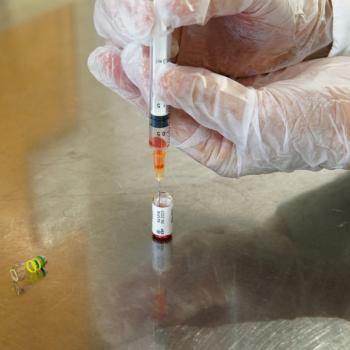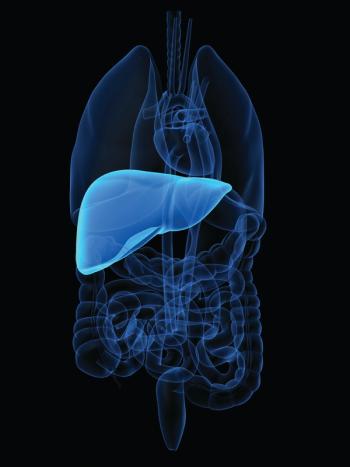
- Oncology Vol 31 No 10
- Volume 31
- Issue 10
POINT: Early Salvage vs Adjuvant Radiotherapy for High-Risk Prostate Cancer
Serial PSA testing with early salvage radiotherapy is a viable option in most high-risk men.
Serial PSA Testing With Early Salvage Radiotherapy Is a Viable Option in Most High-Risk Men
By definition, adjuvant oncologic therapy refers to the postsurgical treatment of patients who are at high risk for recurrence but lack measurable disease. Adjuvant radiotherapy is considered a standard of care in a number of cancer types, including tumors of the breast, brain, head and neck, stomach, rectum, cervix, and endometrium, among others. In these cases, adjuvant radiation has been demonstrated to reduce tumor recurrence, and in some cases, to reduce cancer-specific mortality as well.[1] Unfortunately, the adjuvant therapy paradigm also subjects many patients to unnecessary treatment and the potential for side effects, while at the same time increasing the overall cost to society and to individual patients.
Alternatively, salvage therapy may be given to patients with clinical evidence of residual or recurrent disease after surgery. In the context of prostate cancer, this most commonly manifests as a detectable serum prostate-specific antigen (PSA) level following a radical prostatectomy. While PSA remains controversial as a screening tool in detecting de novo prostate cancers, it is an extremely sensitive biomarker in the postprostatectomy setting, and many modern assays can now detect PSA levels as low as 0.01 ng/mL. Prostate cancer is unique among solid malignancies due to the fact that there is a serum biomarker that is readily available, inexpensive, easy to acquire (via a routine blood draw), and capable of detecting recurrent cancer several years before conventional clinical or radiographic methods. One observational series demonstrated that PSA elevation after prostatectomy is associated with a lead time before clinical manifestation on the order of 8 years.[2] Thus, salvage radiotherapy to the prostate bed has been successful in reducing cancer-specific mortality after biochemical or local recurrence.[3]
At least three randomized trials have examined the role of immediate postprostatectomy radiotherapy in patients with high-risk pathologic features, yet the optimal management remains controversial.[4-6] Two of these trials (Southwest Oncology Group [SWOG] 8794 and European Organisation for Research and Treatment of Cancer 22911) included patients with a detectable postoperative PSA level, and thus the immediate radiotherapy arms comprised a mix of adjuvant and salvage radiotherapy.[4,5] Likewise, the observation arms included some patients with untreated residual disease, which likely resulted in worse outcomes than would have been seen if these patients had been excluded from randomization. Only the German trial (ARO 96-02) tested adjuvant radiation vs observation in a cohort of patients with undetectable PSA levels (< 0.1 ng/mL), and unfortunately this trial had the smallest sample size.[6] Interestingly, among the patients randomized to observation across all three trials, about half (46% to 54%) remained free of biochemical recurrence at 5 years, suggesting that adjuvant radiotherapy would have been unnecessary in a large proportion of patients despite their high-risk pathologic features.
While all three trials demonstrated an improvement in biochemical control with immediate radiation, importantly, none of the trials specified exactly when salvage therapy should be utilized in the observation arms, and a large proportion of men with biochemically recurrent disease in fact did not receive any salvage therapy. In the SWOG trial, the median PSA level at the time of receipt of salvage radiotherapy was 1 ng/mL, a level that is higher than that currently utilized in contemporary practice.[4] Retrospective series have demonstrated that delivering “early” salvage radiotherapy at lower PSA levels is associated with a decreased risk of biochemical recurrence compared with salvage radiation at higher PSA levels, and is possibly also associated with less risk of distant metastases and mortality.[7,8] While there has been no consensus on what constitutes early salvage radiotherapy, it is important to recognize that PSA is a continuous variable and that even the most commonly utilized definition of biochemical failure (PSA ≥ 0.2 ng/mL) is controversial as an absolute numerical cut-off.[9] In our practice, two successive PSA rises above 0.05 ng/mL appears to be predictive of prostate cancer recurrence and can be used to select high-risk patients for early salvage therapy long before the traditional biochemical failure threshold is met.[10] In addition, a contemporary nomogram can be valuable in aiding patients with a personalized estimation of their outcomes following salvage treatment.[7]
To date, no trials have yet been reported comparing purely adjuvant vs early salvage radiotherapy. While the results of ongoing randomized trials such as Radiotherapy and Androgen Deprivation in Combination After Local Surgery (RADICALS) and Radiotherapy-Adjuvant Versus Early Salvage (RAVES) are eagerly awaited, it is likely that they may not definitively answer the question of whether adjuvant treatment has any advantages over early salvage radiation.[11,12] To illustrate the very small differences in expected outcomes between these treatment paradigms, Thompson et al examined various clinical trial designs and estimated that 8,300 patients would have to be recruited over 8 years (with an additional 9 years of follow-up) to test whether early salvage radiation is noninferior to adjuvant radiation.[4] In the current era of rising healthcare costs and cuts to federal research budgets, it is simply not practical or justifiable to invest limited resources in such an expensive endeavor.
So, where should we instead focus our research efforts at this point? Preliminary studies suggest that genomic profiling may have utility in selecting patients for adjuvant therapy, given that genomic classifier scores provide prognostic value in addition to the usual clinical and pathologic features that are typically used in decision making.[13,14] Before genomic classifiers are used in routine practice, however, validation in a prospective trial would be an important next step. In the meantime, clinical judgment remains critical in postoperative management, and practice patterns suggest that observation remains significantly more utilized than adjuvant radiotherapy in the modern era.[15]
In summary, serial PSA testing with initiation of early salvage radiotherapy is an attractive treatment paradigm and should be considered for most men after radical prostatectomy. Because of the ability of serum PSA to detect low-volume prostate cancer recurrences, clinicians can better select those patients who are most likely to benefit from treatment. Likewise, up to half of men with high-risk features may be spared from potentially unnecessary adjuvant therapy and its associated costs and side effects. Until genomic profiling is proven to provide more personalized outcomes assessments, patients should be counseled about both approaches, with joint decision making based on a careful assessment of the risks and benefits of each treatment option.
Financial Disclosure: Dr. Tendulkar recently gave an educational talk for Varian Medical Systems, for which he received an honorarium.
References:
1. Darby S, McGale P, Correa C, et al. Effect of radiotherapy after breast-conserving surgery on 10-year recurrence and 15-year breast cancer death: meta-analysis of individual patient data for 10,801 women in 17 randomised trials. Lancet. 2011;378:1707-16.
2. Pound CR, Partin AW, Eisenberger MA, et al. Natural history of progression after PSA elevation following radical prostatectomy. JAMA. 1999;281:1591-7.
3. Trock BJ, Han M, Freedland SJ, et al. Prostate cancer-specific survival following salvage radiotherapy vs observation in men with biochemical recurrence after radical prostatectomy. JAMA. 2008;299:2760-9.
4. Thompson IM, Tangen CM, Paradelo J, et al. Adjuvant radiotherapy for pathological T3N0M0 prostate cancer significantly reduces risk of metastases and improves survival: long-term followup of a randomized clinical trial. J Urol. 2009;181:956-62.
5. Bolla M, van Poppel H, Tombal B, et al. Postoperative radiotherapy after radical prostatectomy for high-risk prostate cancer: long-term results of a randomised controlled trial (EORTC trial 22911). Lancet. 2012;380:2018-27.
6. Wiegel T, Bartkowiak D, Bottke D, et al. Adjuvant radiotherapy versus wait-and-see after radical prostatectomy: 10-year follow-up of the ARO 96-02/AUO AP 09/95 trial. Eur Urol. 2014;66:243-50.
7. Tendulkar RD, Agrawal S, Gao T, et al. Contemporary update of a multi-institutional predictive nomogram for salvage radiotherapy after radical prostatectomy. J Clin Oncol. 2016;34:3648-54.
8. Stish BJ, Pisansky TM, Harmsen WS, et al. Improved metastasis-free and survival outcomes with early salvage radiotherapy in men with detectable prostate-specific antigen after prostatectomy for prostate cancer. J Clin Oncol. 2016;34:3864-71.
9. Valicenti RK, Thompson I Jr, Albertsen P, et al. Adjuvant and salvage radiation therapy after prostatectomy: American Society for Radiation Oncology/American Urological Association guidelines. Int J Radiat Oncol Biol Phys. 2013;86:822-8.
10. Mir MC, Li J, Klink JC, et al. Optimal definition of biochemical recurrence after radical prostatectomy depends on pathologic risk factors: identifying candidates for early salvage therapy. Eur Urol. 2014;66:204-10.
11. Parker C, Clarke N, Logue J, et al. RADICALS (Radiotherapy and Androgen Deprivation in Combination after Local Surgery). Clin Oncol (R Coll Radiol). 2007;19:167-71.
12. Pearse M, Fraser-Browne C, Davis ID, et al. A phase III trial to investigate the timing of radiotherapy for prostate cancer with high-risk features: background and rationale of the Radiotherapy-Adjuvant Versus Early Salvage (RAVES) trial. BJU Int. 2014;113:7-12.
13. Den RB, Yousefi K, Trabulsi EJ, et al. Genomic classifier identifies men with adverse pathology after radical prostatectomy who benefit from adjuvant radiation therapy. J Clin Oncol. 2015;33:944-51.
14. Zhao SG, Chang SL, Spratt DE, et al. Development and validation of a 24-gene predictor of response to postoperative radiotherapy in prostate cancer: a matched, retrospective analysis. Lancet Oncol. 2016;17:1612-20.
15. Sineshaw HM, Gray PJ, Efstathiou JA, Jemal A. Declining use of radiotherapy for adverse features after radical prostatectomy: results from the National Cancer Database. Eur Urol. 2015;68:768-74.
Articles in this issue
about 8 years ago
Management of Breast Cancer Therapy–Related Sexual DysfunctionNewsletter
Stay up to date on recent advances in the multidisciplinary approach to cancer.


















































































